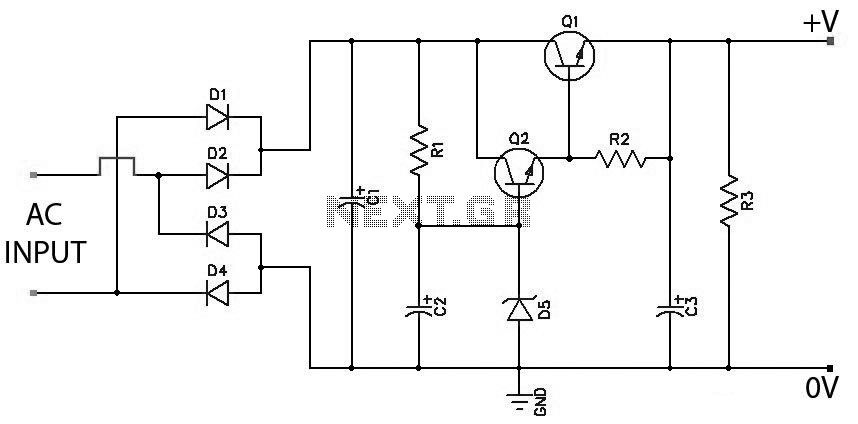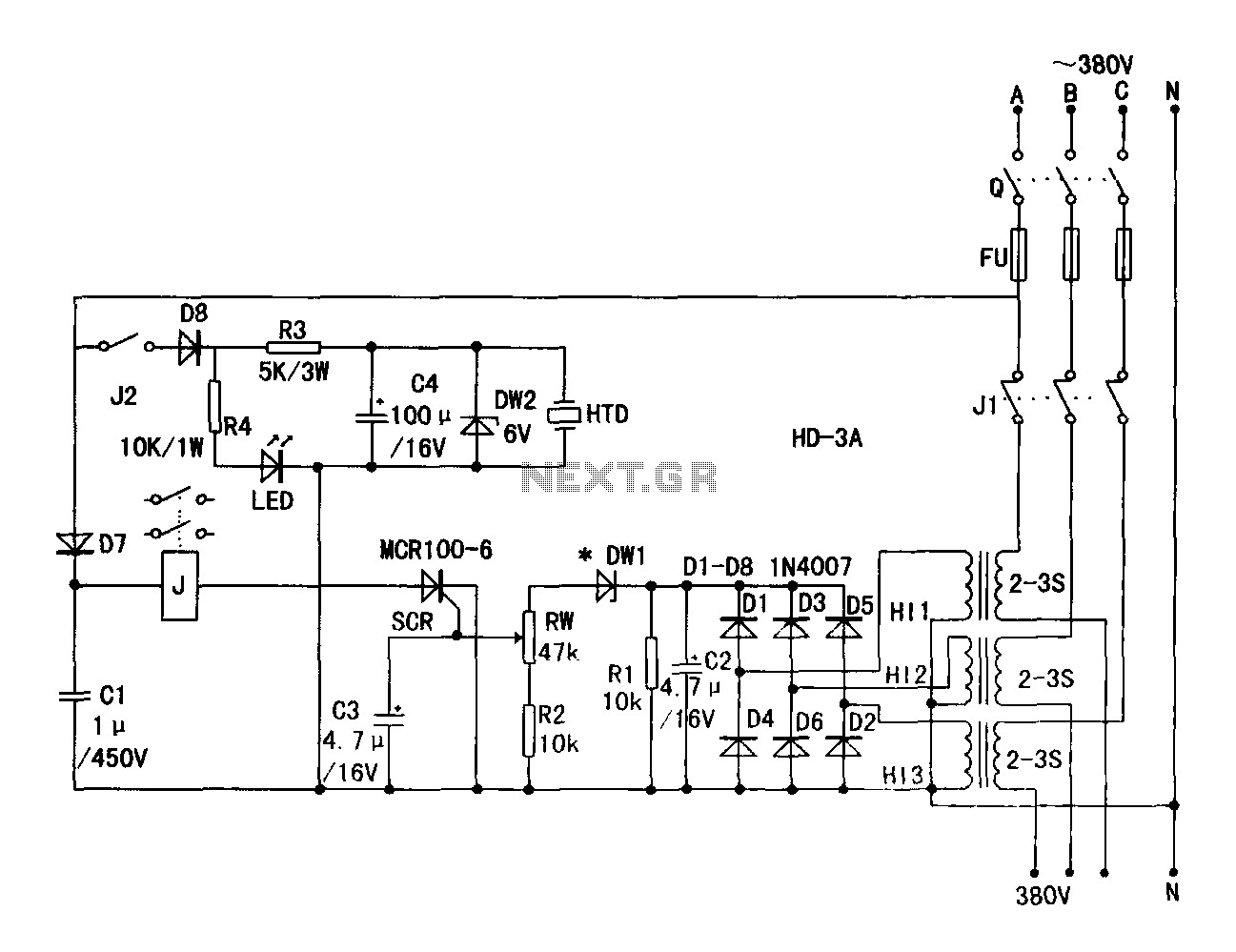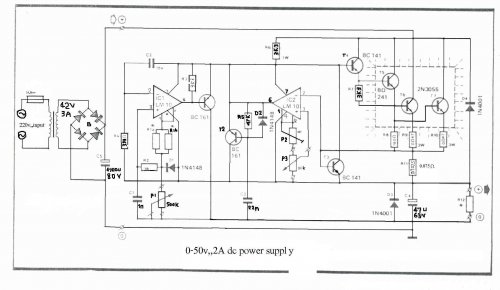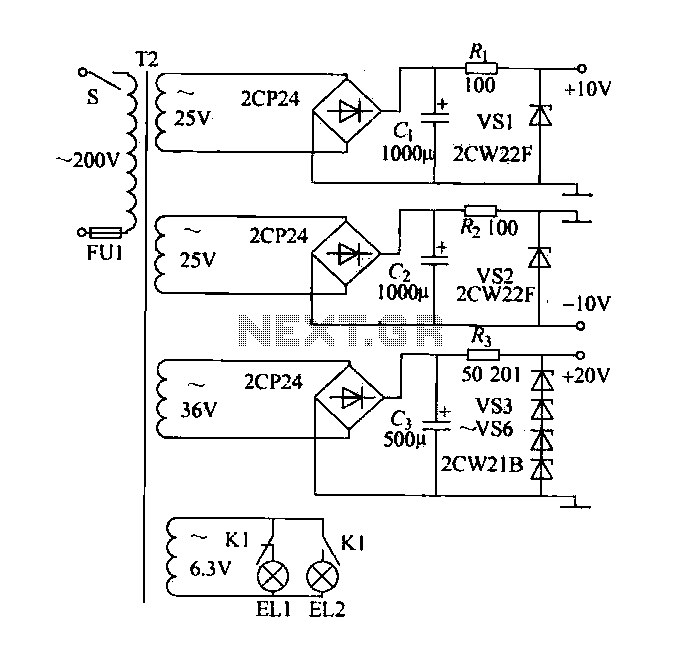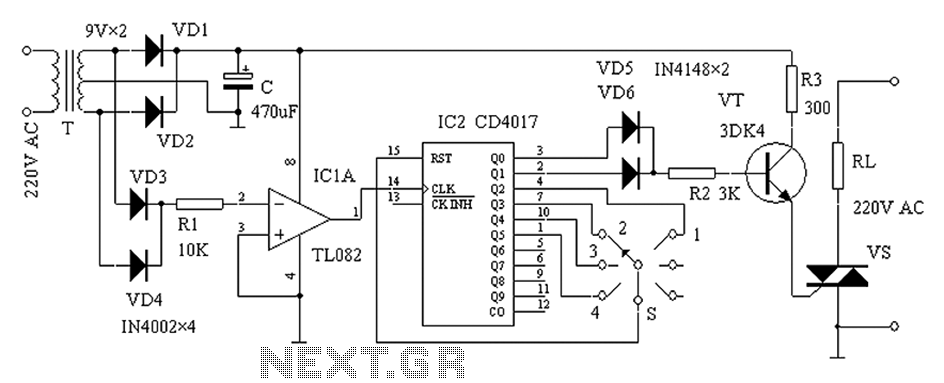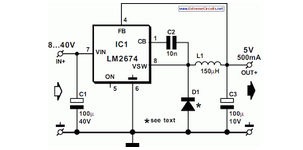
load switches with zero power MOSFETs
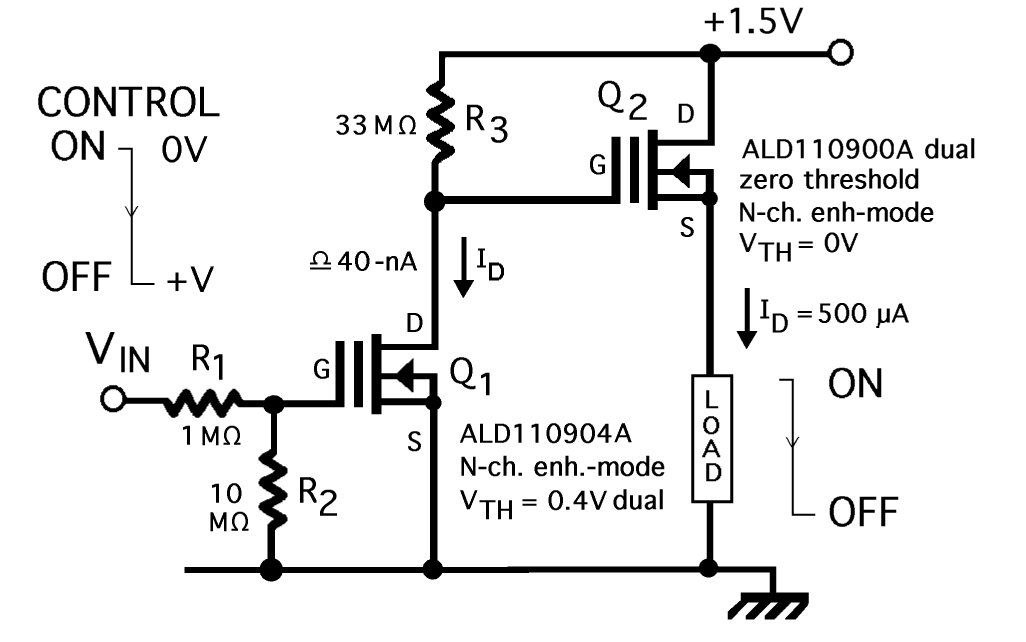
As circuit power supply voltages decrease and green energy trends gain popularity, designers should re-evaluate circuits that continuously consume power to reduce overall system power consumption. One such circuit is the "normally-ON" circuit, which can now be redesigned with new components to minimize energy waste. Low-voltage operation and ultra-low power consumption have become increasingly significant as circuit supply voltages decline. Today's portable consumer electronic designs conserve battery power and minimize battery drain by temporarily turning off unused parts of a system using a high-side load switch. Load switches are typically processor-controlled and must be CMOS-compatible. Power MOSFETs have become the primary switching element for high-side load-switch applications, with optimal performance achieved using a P-channel device. Many of these circuits are classified as "normally-OFF" circuits, meaning they require the power supply to be on to operate. There is a growing trend to reassess high-side load switches, which have been traditionally accepted despite their energy waste. Although these circuits waste only small amounts of energy at a time, new green trends demand significant improvements in efficiency for these applications. Often, these enhancements can be accomplished with little to no additional cost, resulting in economic payback over the system's operational life. Recent redesign efforts have increased the energy efficiency of compact fluorescent lamps (CFL) and small wall-powered modules used for various applications, including battery chargers and cell phone adapters. Conversely, circuits that function oppositely to "normally-OFF" circuits are referred to as "normally-ON" circuits. These circuits must remain "on" without power and turn "off" when operational. An example includes burglar alarms or emergency alarms that require the system to be in a normally-ON state, activating and sending a signal only when this state is interrupted. Such circuits are continuously "on" 24 hours a day, remaining idle until an event occurs that disconnects their "on" status, prompting them to activate. This category of circuits is often described as very low duty-cycle circuits, where the off time is minimal compared to the on time. Consequently, the power consumption during the "ON" state can be problematic since they consume power while monitoring for external events. This presents the need for a "normally-ON" load switch that consumes zero power, which can be achieved using a depletion-mode MOSFET that functions like a "normally-closed" SPST relay. Historically, the electronics industry has designed this type of circuit by drawing more power from an AC source to create a circuit that performs the desired function. An example of a "normally-OFF" circuit that continuously consumes power is an emergency light design. Typically, an AC-power module is connected to an AC power source continuously, consuming a small amount of AC power to operate a circuit that may use a "normally-closed" SPST relay. This relay remains energized until the AC power source is interrupted, at which point the relay opens and switches to a backup battery pack to power an emergency light or alarm.
The design of "normally-ON" circuits is critical in applications where constant readiness is essential, such as security systems and emergency alarms. The incorporation of depletion-mode MOSFETs as load switches allows for significant energy savings by ensuring that the circuit remains in a low-power state until activated. This approach not only enhances the energy efficiency of the system but also aligns with the increasing demand for sustainable electronic designs. The use of advanced components, such as low-voltage and ultra-low power devices, further supports the trend towards green technology while maintaining operational reliability.
In practical implementation, designers must consider the impact of component selection on overall circuit performance. For instance, using a depletion-mode MOSFET can significantly reduce quiescent current, allowing the circuit to remain in a low-power state without compromising responsiveness. Additionally, implementing efficient high-side load switches can minimize energy loss during operation, contributing to a more sustainable design approach. By re-evaluating traditional circuit designs and embracing innovative solutions, engineers can effectively address the challenges posed by decreasing supply voltages and the growing emphasis on energy conservation.As circuit power-supply voltages decrease and green energy trends grow in popularity, designers should re-examine some of the circuits that continually consume power, in an effort to reduce overall system power consumption. One circuit that requires continuous voltage is the "normally-ON" circuit, and it is now possible to redesign this circuit wi
th new components to reduce wasted energy. Low-voltage operation and ultra-low power consumption have become increasingly important as circuit-supply voltages decrease. Today`s portable consumer electronic designs conserve battery power and minimize battery drain by temporarily turning off unused parts of a system, by using a high-side load switch.
Load switches are usually processor-controlled, and therefore must be CMOS-compatible. Power MOSFETs have become the primary switching element for high-side load-switch applications, and optimum performance is achieved when using a P-channel device. Many of these circuits are known as "normally-OFF" circuits, meaning they require the power supply to be on in order to operate.
Increasingly, there is a trend to re-examine high-side load switches as one of the "generally-accepted, facts-of-life" type of circuits. Where conventional wisdom and tradition determine a way to build traditional circuits, high-side load switches are wasteful of energy.
However, these circuits were tolerated because they wasted only small amounts of energy at a time. New green trends call for improvements in the efficiency of these types of applications by many orders of magnitude. Often this can be accomplished at incremental or no additional cost, and economical payback can be achieved across the operating life of the system.
Recently, re-design efforts have boosted the energy efficiency of compact fluorescent lamps (CFL) and small wall-powered modules used for everything from battery chargers and cell phones to printer adapters. A large group of circuits that work in reverse to these "normally-OFF" circuits are known as "normally-ON" circuits.
They are required to be "on" without power and "off" when actually working, or powered. An example of this is a burglar alarm or an emergency alarm which requires the system to be in a normally-ON state. These systems will activate and send a signal only when the normally-ON status is interrupted. These types of circuits are continuously "on" for 24-hours a day and normally sit idle, waiting for an event to happen that will disconnect its "on" status, allowing it to jump into action.
Sometimes, this class of circuits is also known as very low duty-cycle circuits, where their off time is very low compared to their on time. For these circuits, the "ON time" power consumption can become an issue, because they are doing nothing when they are on while monitoring for an external event to take place.
During this "ON" state, AC or battery power is being consumed. This is a class of circuits that is normally-ON but requires only very low incidence of OFF-state. This situation creates the need for a "normally-ON" load switch, and one that simultaneously consumes zero-power. Such a switch requires a depletion-mode MOSFET, which acts like a "normally-closed" SPST relay. In the past, the electronic industry has typically designed this type of circuit by using more power from an AC source, in order to build a circuit that performs and emulates this required function.
An emergency-light design provides an example of a "normally-OFF" circuit that continually uses power. Typically an AC-power module is connected to an AC power source 24/7 and burns a small amount of AC power.
This power is supplied to a circuit that may employ a "normally-closed" SPST relay. This relay is energized continuously until the AC power source is interrupted, then the SPST relay is "opened" and switched to a backup battery pack to power an emergency light or an alarm. The AC-power module is always on an 🔗 External reference
The design of "normally-ON" circuits is critical in applications where constant readiness is essential, such as security systems and emergency alarms. The incorporation of depletion-mode MOSFETs as load switches allows for significant energy savings by ensuring that the circuit remains in a low-power state until activated. This approach not only enhances the energy efficiency of the system but also aligns with the increasing demand for sustainable electronic designs. The use of advanced components, such as low-voltage and ultra-low power devices, further supports the trend towards green technology while maintaining operational reliability.
In practical implementation, designers must consider the impact of component selection on overall circuit performance. For instance, using a depletion-mode MOSFET can significantly reduce quiescent current, allowing the circuit to remain in a low-power state without compromising responsiveness. Additionally, implementing efficient high-side load switches can minimize energy loss during operation, contributing to a more sustainable design approach. By re-evaluating traditional circuit designs and embracing innovative solutions, engineers can effectively address the challenges posed by decreasing supply voltages and the growing emphasis on energy conservation.As circuit power-supply voltages decrease and green energy trends grow in popularity, designers should re-examine some of the circuits that continually consume power, in an effort to reduce overall system power consumption. One circuit that requires continuous voltage is the "normally-ON" circuit, and it is now possible to redesign this circuit wi
th new components to reduce wasted energy. Low-voltage operation and ultra-low power consumption have become increasingly important as circuit-supply voltages decrease. Today`s portable consumer electronic designs conserve battery power and minimize battery drain by temporarily turning off unused parts of a system, by using a high-side load switch.
Load switches are usually processor-controlled, and therefore must be CMOS-compatible. Power MOSFETs have become the primary switching element for high-side load-switch applications, and optimum performance is achieved when using a P-channel device. Many of these circuits are known as "normally-OFF" circuits, meaning they require the power supply to be on in order to operate.
Increasingly, there is a trend to re-examine high-side load switches as one of the "generally-accepted, facts-of-life" type of circuits. Where conventional wisdom and tradition determine a way to build traditional circuits, high-side load switches are wasteful of energy.
However, these circuits were tolerated because they wasted only small amounts of energy at a time. New green trends call for improvements in the efficiency of these types of applications by many orders of magnitude. Often this can be accomplished at incremental or no additional cost, and economical payback can be achieved across the operating life of the system.
Recently, re-design efforts have boosted the energy efficiency of compact fluorescent lamps (CFL) and small wall-powered modules used for everything from battery chargers and cell phones to printer adapters. A large group of circuits that work in reverse to these "normally-OFF" circuits are known as "normally-ON" circuits.
They are required to be "on" without power and "off" when actually working, or powered. An example of this is a burglar alarm or an emergency alarm which requires the system to be in a normally-ON state. These systems will activate and send a signal only when the normally-ON status is interrupted. These types of circuits are continuously "on" for 24-hours a day and normally sit idle, waiting for an event to happen that will disconnect its "on" status, allowing it to jump into action.
Sometimes, this class of circuits is also known as very low duty-cycle circuits, where their off time is very low compared to their on time. For these circuits, the "ON time" power consumption can become an issue, because they are doing nothing when they are on while monitoring for an external event to take place.
During this "ON" state, AC or battery power is being consumed. This is a class of circuits that is normally-ON but requires only very low incidence of OFF-state. This situation creates the need for a "normally-ON" load switch, and one that simultaneously consumes zero-power. Such a switch requires a depletion-mode MOSFET, which acts like a "normally-closed" SPST relay. In the past, the electronic industry has typically designed this type of circuit by using more power from an AC source, in order to build a circuit that performs and emulates this required function.
An emergency-light design provides an example of a "normally-OFF" circuit that continually uses power. Typically an AC-power module is connected to an AC power source 24/7 and burns a small amount of AC power.
This power is supplied to a circuit that may employ a "normally-closed" SPST relay. This relay is energized continuously until the AC power source is interrupted, then the SPST relay is "opened" and switched to a backup battery pack to power an emergency light or an alarm. The AC-power module is always on an 🔗 External reference
